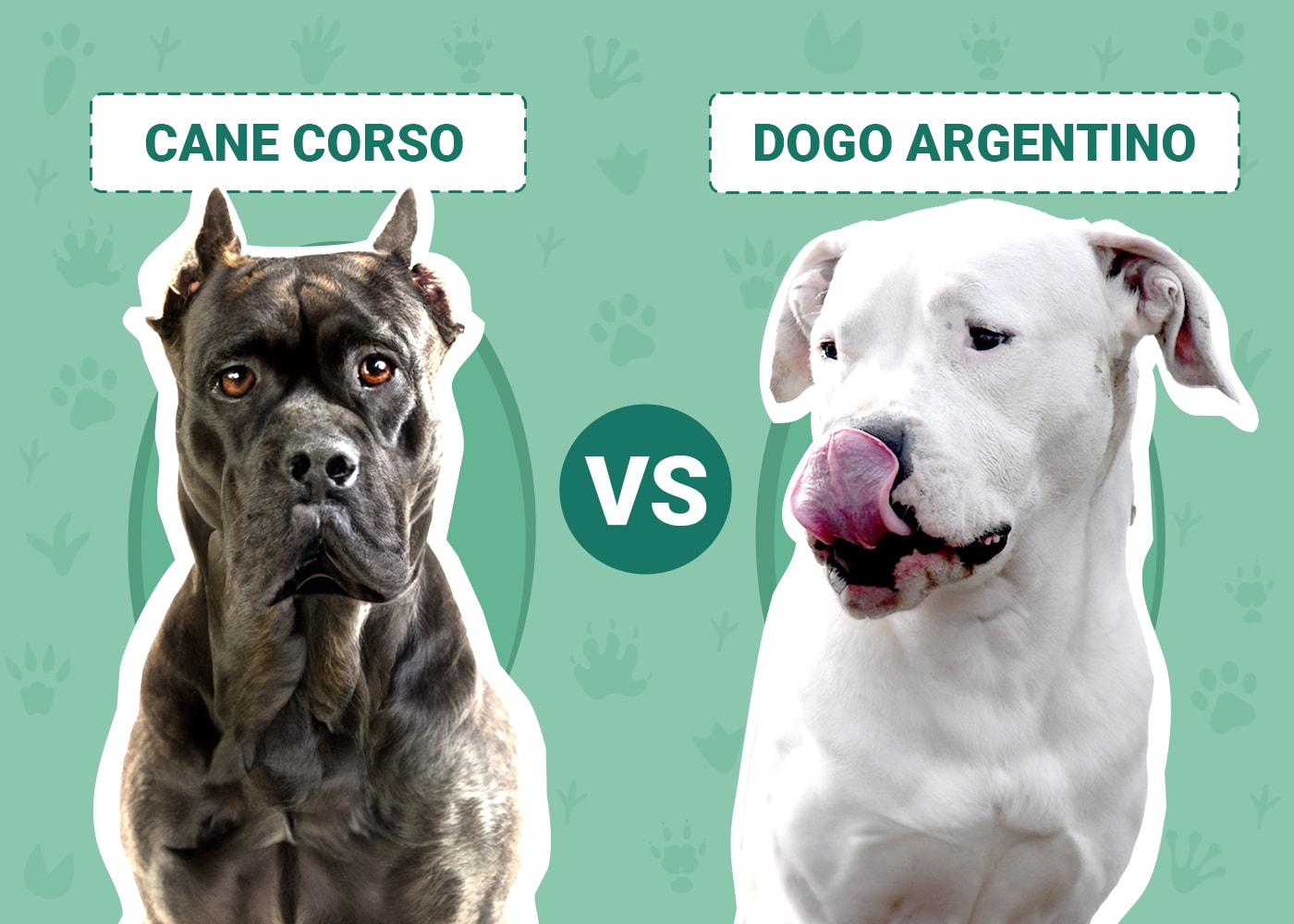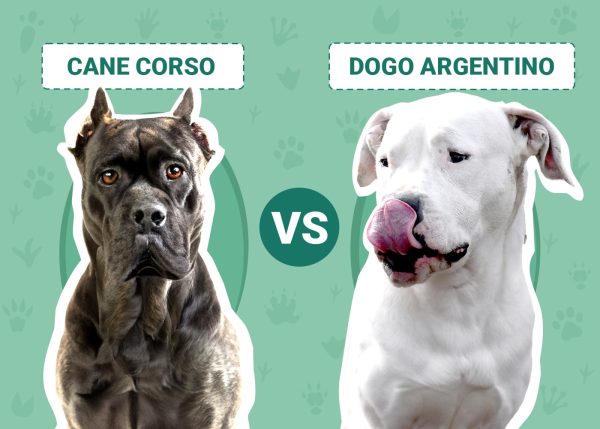Click to Skip Ahead
Some dogs are just built differently, and both the Cane Corso and the Dogo Argentino are prime examples. As huge dogs with similar builds but very different colorings and origins, how’s one supposed to tell them apart? Let’s dive into more details about the breeds and what sets them apart from each other.
Visual Differences
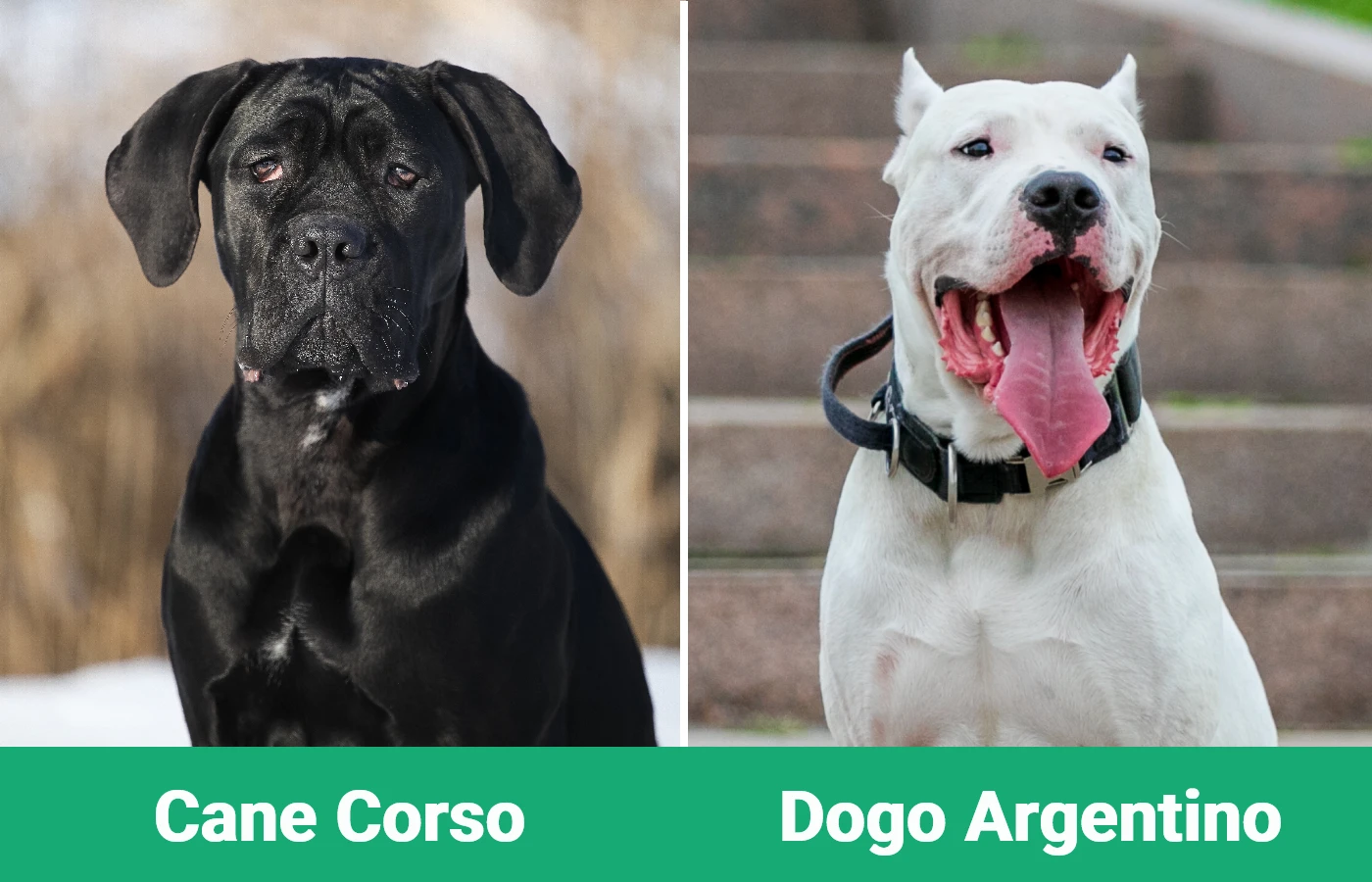
At a Glance
- Average height (adult): 23–27 inches
- Average weight (adult): 90–120 pounds
- Lifespan: 9–12 years
- Exercise: 2+ hours per day
- Grooming needs: Low maintenance
- Family-friendly: Requires supervision around children
- Other pet-friendly: Sometimes
- Trainability: Strong-willed, loyal, eager to please
- Average height (adult): 24–27 inches
- Average weight (adult): 80–100 pounds
- Lifespan: 10–12 years
- Exercise: 1+ hours per day
- Grooming needs: Low maintenance
- Family-friendly: Requires lots of training & not generally recommended around small kids
- Other pet-friendly: Cats & dogs only because of strong prey drive
- Trainability: Intelligent, loyal, independent
Cane Corso Overview

The Cane Corso is a large Italian hunting dog, and it has most of the mastiff’s traditional traits: an imposing build, protective loyalty, and a strong bond with their people. Let’s discuss this classic mastiff offshoot in more detail below, from the Cane Corso’s colorings and personality, all the way to its lineage.
Coat & Colors
The Cane Corso comes in an array of colors: brindle, black brindle, black, fawn, gray, and gray brindle. Black is the standard Cane Corso coat color, while recessive colors like fawn, gray, and brindle are rare.
Cane Corsos have a short, glossy coat that’s relatively easy to care for. Just a weekly brush should do the trick, although twice a week may be necessary during shedding seasons. This is around spring to summer, but it can last all the way through mid-fall.
Personality & Temperament
Cane Corsos are descended from mastiffs in central Europe, and they were primarily bred as a canine bodyguard. This means they’re reserved with strangers, intensely protective, and loyal, yet they are still often considered Velcro lap dogs with their families. As with any large working breed, a Cane Corso is generally not recommended for families with small children, but they can be very gentle with proper socialization.
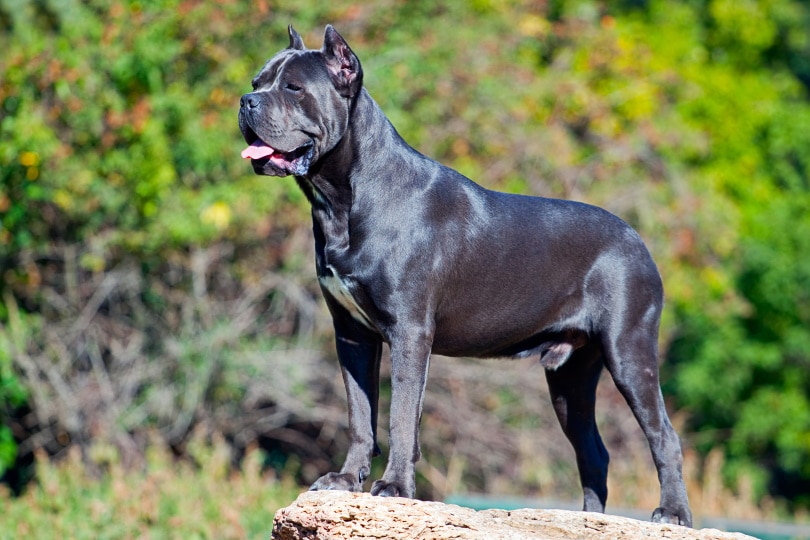
Heritage
The Cane Corso has a long, storied history stretching back to the Roman Empire. They were originally bred from the Roman Molossian dogs, which were used as Greco-Roman war dogs and hunting hounds. Bred with Mastiffs, the Cane Corso became popular as a farm dog, where it excels at protecting livestock herds.
Suitable for:
Today, the Cane Corso is still an excellent choice as a canine protector, but it does very well as a family dog too. It has a gentler nature than many large working breeds, but it varies based on the individual dog’s temperament and socialization techniques.
Families with older kids or teens are a better choice for a Cane Corso, but it’s possible to raise one alongside your kids as long as you keep a close eye on them. Big dogs sometimes don’t know their own strength, and Cane Corsos are no exception!
Dogo Argentino Overview
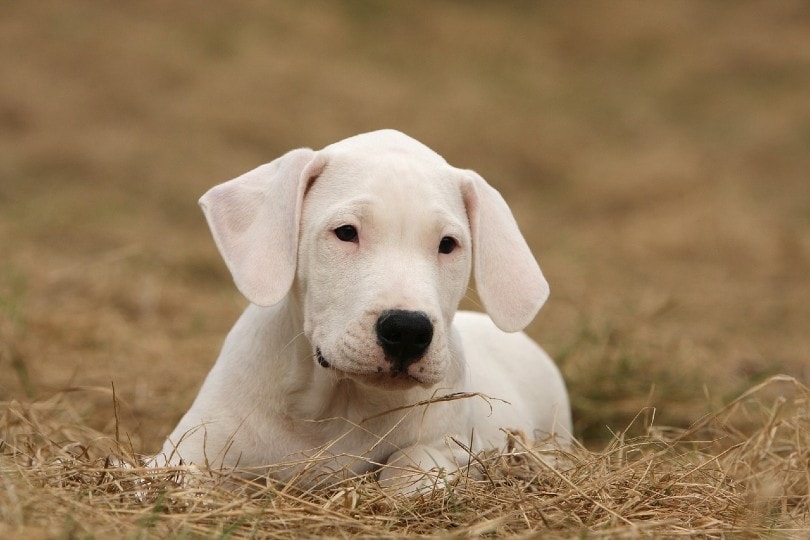
The Dogo Argentino is built like a brick house, with muscular legs and jaws to match. They were bred to hunt big game in Argentina, but they’re remarkably protective dogs. Known for their signature white coat, let’s learn some more about the Dogo Argentino down below.
Coat & Colors
The Dogo Argentino is world-famous for its all-white coat, but sometimes the breed shows black “defect” markings on and around the head. Despite being bred in a tropical climate, the Dogo Argentino has a dense coat that is well-suited for cold climates as well, as the southern parts of Argentina can get quite cold.
Perhaps best of all, the breed requires little grooming to keep presentable. A weekly brush is sufficient for most of the year, but this breed sheds more from the late spring to early fall to grow a denser coat for the upcoming cold winter months.
Personality & Temperament
The Dogo Argentino was bred to hunt big game like boar, but they were also bred to be loyal, loving protectors. Like the Cane Corso and other driven big dogs, the Dogo Argentino needs a firm hand when training because they’ll run circles around inexperienced dog owners. The breed isn’t too family-friendly under most situations, but with intense socialization, they have the potential to be.

Heritage
The Dogo Argentino is a kind of mutt created from lots of breeds: the now-extinct Cordoba Fighting Dog, Great Dane, Pointer, Boxer, and more. The Cordoba Hunting Dog was a combination of numerous mastiffs, and the others were crossed into the bloodline to produce a more loyal and affectionate hunting dog.
Suitable for:
We don’t recommend the Dogo Argentino for families with small kids because they require obedience and socialization training to weed out aggressive behaviors. The Dogo Argentino is a protector at heart, but they need a lot of love, too, like any canine! If you can commit to more extensive dog training than you’d expect with other breeds, it may be the dog for you.
Which Breed Is Right for You?
The Cane Corso and Dogo Argentino are both large, muscular dogs with an intensely loyal but affectionate nature. They both make excellent watchdogs, but the latter requires more socialization to be suitable for families with kids.
With such similar personalities, you also have to consider the color. The Cane Corso tends to be black or brindle, while the Dogo Argentino is typically all white. While less important than the dog’s individual temperament, the appearance is worth thinking about too.
See Also:
Featured Image Credit: Top – Cane Corso (Eudyptula, Shutterstock) | Bottom – Dogo Argentino (GeptaYs, Shutterstock)

